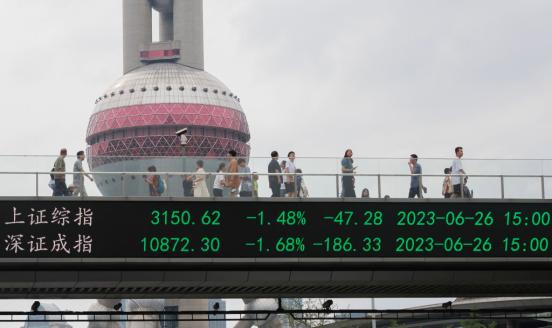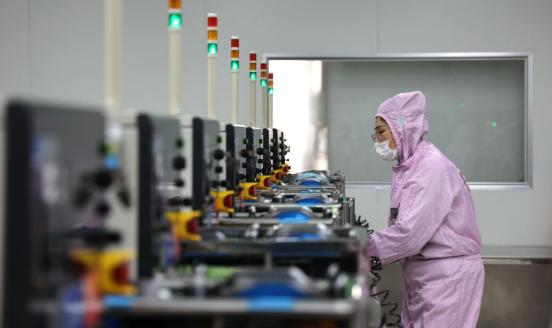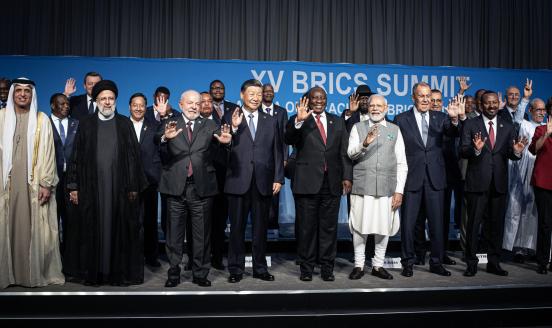Why this round of U.S. protectionism is different
Although it is not the first time that the world has been caught in the China-U.S. crossfire, this round of U.S. protectionist moves against China is
The escalation of the China-U.S. trade war has been worrying the world over the past few weeks. After the Washington’s announcement of punitive tariffs on 1,333 Chinese products with a value of up to $60 billion under the Section 301 of Trade Act, Beijing responded very quickly with a retaliation list of 106 products of $50 billion. Although it is not the first time that the world has been caught in the China-U.S. crossfire, the U.S.’ protectionist moves against China seem different this time. In fact, they are broader-based both as they involve a much larger number of products and in that they also target the global competition for U.S. companies and not only the U.S. market.
More specifically, the investigation announced by the U.S. administration on April 4 into as many as 1,333 products on the grounds of potential violations of intellectual property rights exploits Section 301 of the Trade Act. This is surprising in itself as Section 301 has rarely been used in recent times. Because of its unilateral characteristics, which are intrinsically inconsistent with the international dispute settlement system introduced by the WTO in 1995, U.S. trade actions have not usually enforce Section 301 (the last one was to Ukraine, a non-WTO members, in 2001) but rather Section 337 of the Tariff Act[1]. In fact, in the past few decades after 1980, the U.S. has only launched five investigations of very specific products under Section 301 against China, and none of them have ever been implemented. Instead, a compromise was always reached before the end of the interim period.
However, this time around, the U.S. investigation covers a very long list of products at an approximate value of $60 billion (about 10[2] percent of U.S.’ imports from China). More importantly, some of the higher-end products included are not yet major exports from China into the U.S., such as aircraft and spacecraft. The magnitude of the list is unprecedented even in the context of Section 301 investigations, but can only be triggered with the Section 301. First, Section 301 wins over Section 337 as the latter requires proof of harm to the U.S. domestic market, which limits the products that can be covered, but this is not necessary for Section 301 which can be invoked if U.S. interests in third markets are threatened[3]. Also, Section 301 does not require a specific applicant or industry for the investigation, so it can be used completely under the initiative of the U.S. government[4]. Moreover, the use of Section 301 is very telling in terms of the U.S.’s final objective with this trade war, namely China’s future production capacity rather than its present capacity and, thus, China’s long-term competition with the U.S. at the higher end of the manufacturing spectrum.
If one delves into the comparison between the current China-U.S. dispute with the past ones, several distinct features, in addition to the massive volume of products and the choice of a Section 301 investigation, also stand out. First, the previous Section 301 investigations can be considered independent actions as they target very specific products and also a greater number of countries. Instead, the current list under investigation, beyond being massive in number, is targeted only at China. Beyond the Section 301 investigation, the U.S. has further squeezed the screening of Chinese investment in the U.S. on the basis of national security. The U.S. administration has even started to discuss visa restrictions on China. As such, it seems to be a full-fledged U.S.-Sino economic conflict and the Section 301 investigation is only one part of it.
In a nutshell, this round of U.S. protectionist moves against China is very different, and frankly much more worrisome, than past ones. It is in no way just a poker game launched by the U.S. to reduce its bilateral trade deficit with China, but the herald of an era of China-U.S. strategical competition. On this basis, it seems difficult to have the two parties involved sit at a negotiation table since the number of topics to be negotiated is too broad and the U.S. and China simply have opposing objectives.
[1] For a discussion on the Section 301 as a rogue tool, one can check Chad P. Brown (PIIE), “Rogue 301: Trump to Dust Off another Outdated US Trade Law?”. The detailed facts for 301 and 337 can be found in the USITC Section 337 Investigations – Facts and Trends Regarding Caseload and Parties and Facts Sheets for Section 301.
[2] Errata, corrected on 26th April.
[3] Kevin C. Kennedy (1987, Cornell International Law Journal):
- Page 131: There are two elements of a section 337 violation. The petitioner must prove the existence of (1) unfair methods of competition or unfair acts that (2) tend to injure or destroy a domestic
- Page 133: Section 301 grants relief for four broad categories of unfair trade practices. Trade practices that are (1) "inconsistent with the provisions of, or otherwise deny benefits to the United States under, any trade agreement"; (2) "unjustifiable"; (3) "unreasonable"; or (4) "discriminatory'' are subject to section 301 action.
[4] Kevin C. Kennedy (1987, Cornell International Law Journal).
- Page 132: Proceedings before the ITC follow the procedures used in federal district court. A complaint filed with the ITC commences an investigation. The complaint must satisfy more than the bare notice requirements of the Federal Rules of Civil Procedure.
- Page 133: Under section 302, the President is authorized to take "all appropriate and feasible action within his power."
- Page 134: The United States Trade Representative (USTR), the President, or interested persons may initiate a section 301 action. The President may act on his own motion, or when requested by a petition initiated by either the USTR or an interested person.




